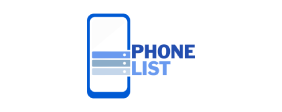In the web development sector , there are many terms that are often unclear or have ambiguous definitions, such as UIX, accessibility, link juice, indexing, wireframe, etc. Among these concepts, we also find web architecture , a phase within web development that has outstanding importance over the rest of them. But do you know exactly what it is and how it can influence your web project? Today from Online Zebra , we tell you everything you need to know about web architecture, its definition and examples. Web architecture is the discipline that encompasses the organization of the contents and information of a website, including the hierarchy between its elements and the relationships between them.
How does web architecture affect your site's SEO
Good web architecture ensures that users and search engine crawlers can easily move around our portal. Also, in terms of user experience , it helps users know: “what am I doing here?” and “where do I go now?” An SEO-optimized web architecture is attractive South Africa WhatsApp Number Data and efficient for bots to crawl, helping to find and display our content in the SERPs. But how is your site’s web architecture presented to be a key element of your search engine positioning strategy? It happens for three reasons: Guided Search Engine Spiders An optimized web architecture helps search engine spiders find and index all pages on the website. If we have pages that are several clicks away from the start, Googlebot will have difficulty indexing them.
Advantages of a good web architecture
As we saw before, web information architecture is the way in which your website, its contents, links, URLs, etc. are structured. Let’s see some of the main objectives for which we must create a good web structure from the beginning: Improve usability Usability refers to the ease that users have to navigate and find what they are looking for within our website . The goal is to achieve easy Aero Leads and intuitive navigation for users. The greater the usability, the better the user experience will be when searching for a specific product in our e-commerce or a blog or magazine article on a specific topic. And not only when searching, but the user must already find themselves from the main page or home with all the facilities to get where they want.


